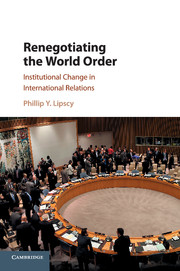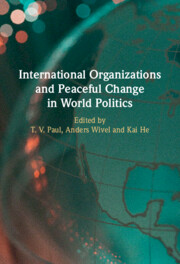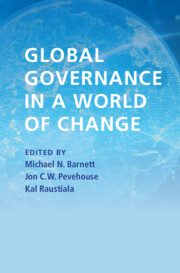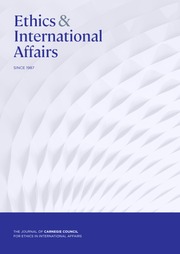Exit from International Organizations
Why do states exit international organizations (IOs)? How often does exit from IOs – including voluntary withdrawal and forced suspension – occur? What are the effects of leaving IOs for the exiting state? Despite the importance of membership in IOs, a broader understanding of exit across states, organizations, and time has been limited. Exit from International Organizations addresses these lacunae through a theoretically grounded and empirically systematic study of IO exit. Von Borzyskowski and Vabulas argue that there is a common logic to IO exit which helps explain both its causes and consequences. By examining IO exit across 198 states, 534 IOs, and over a hundred years of history, they show that exit is driven by states' dissatisfaction, preference divergence, and is a strategy to negotiate institutional change. The book also demonstrates that exit is costly because it has reputational consequences for leaving states and significantly affects other forms of international cooperation.
- Provides a solidly grounded theory explaining why IO exits occur and their effects which links both withdrawals and suspensions and rectifies recent narratives that have emerged from isolated cases
- Examines a comprehensive dataset of IO exits to provide systematic empirical evidence of how states have used exit in similar ways across organizations and time as well as a comprehensive evaluation of their effects
- Discusses the implications of IO exit for international cooperation more broadly including reflections on past cases and current affairs, as well as how this phenomenon might affect international cooperation in the future
Reviews & endorsements
‘An important new book explaining how states bargain to change institutions by using exit. With comprehensive analysis and fascinating cases, the authors explore every aspect of the complex negotiations, offering a model of rigorous social science research. This insightful study on exit strategies provides a valuable new perspective on theories of international cooperation.' Christina L. Davis, Edwin O. Reischauer Professor of Japanese Politics, Harvard University
‘Exit from International Organizations valuably shows that dissatisfaction with institutional performance is often associated with state withdrawal; that fewer than 10% of threats to withdraw are carried out; that there is no long-term trend in withdrawal incidence; and that withdrawal has greater effects on reputations than on material consequences. Students of international organizations can learn a lot from this careful study.' Robert O. Keohane, Professor of International Affairs, Princeton University
‘Despite widespread interest in international organizations, very little systematic research has been conducted on why states sometimes exit such organizations and the consequences of withdrawal. This impressive study sheds new light on these important issues.' Edward D. Mansfield, Hum Rosen Professor of Political Science, University of Pennsylvania
‘If the reasons a country joins an International Organizations might be intuitively clear, explaining why it might leave, be expelled or sanctioned is not – and has remained so because such steps are complex and relatively rare. Patterns and insights emerge, however, when the entire universe of IO exit cases, transpiring over more than a century across 534 international organizations, are painstakingly assembled. von Borzyskowski and Vabulas have curated, analyzed, and interpreted this important dataset for the rest of us, in the process breaking new ground in IO theory and practice while creating a public good that will be used and updated for years to come.' Michael Woolcock, Lead Social Scientist, Development Research Group, World Bank and Adjunct Lecturer of Public Policy, Harvard University
Product details
June 2025Hardback
9781009532280
340 pages
229 × 152 mm
Not yet published - available from June 2025
Table of Contents
- Acknowledgements
- Part I. Introduction and Theory:
- 1. The common logic of IO exits
- 2. Exit as a costly strategy to negotiate change
- Part II. Withdrawal:
- 3. Predictors of withdrawal: when and why do states withdraw from IOs?
- 4. The consequences of IO withdrawal for exiting states
- 5. Case studies: three withdrawals
- Part III. Suspension:
- 6. Predictors of suspension: when and why do states get suspended from IOs?
- 7. The consequences of IO suspension for exiting states
- 8. Case studies: three suspensions
- Part IV. Conclusion:
- 9. Revisiting exit from IOs
- References
- Data appendix.










